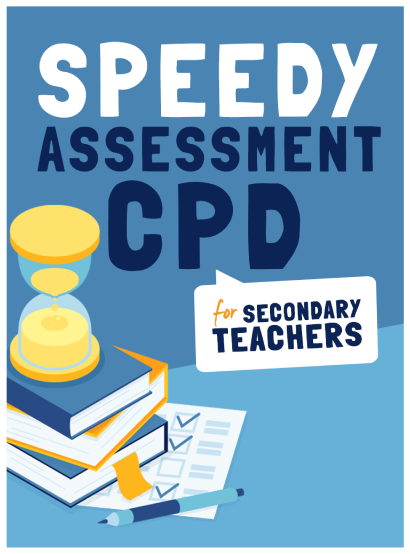Remote revision – How hybrid learning can support your GCSE students

Nikki Cunningham-Smith looks at how your school’s pandemic-prompted distance learning provision could take your GCSE revision classes to the next level…

The landscape of teaching has somewhat altered since the monumental shift that the pandemic threw at the profession.
Back in March 2020, most settings were busy scrambling to navigate the brave new world of distance learning. Two years later, we now find ourselves in a place where most schools are capable of delivering hybrid learning provision that combines in-person lessons with education received at home.
That might make some of us fear for the future of the ‘snow day’ – will we ever again be able to down tools and join our charges in sledging down the nearest big hill, sharing in the joys of a bonus day of fun? – but it must be said that some incredible opportunities are now being presented to us when it comes to exam classes.
Where we are
In the past, we’d rely heavily on arranging interventions and exam classes in the hope that those pupils needing them the most would actually attend. It was hard to chase those that didn’t, and near impossible make them compulsory, since most would take place during extracurricular school hours.
Yet we’re now in the position of being able provide comprehensive support at our pupils’ and parents’ convenience in a number of different ways.
Accessibility
Most students own, or at least have access to one or more digital devices, with those that previously didn’t now much more likely to, in the wake of the government’s laptop funding schemes. More access means more incentive for schools to continue developing their hybrid learning provision so that it encompasses livestreamed and archived, on-demand revision classes.
Targeted support
We’ve seen further government funding support for the rollout of Microsoft 365 for Education and Google Classroom in trusts and specific settings. This has given schools more options when it comes to delivering, supporting and monitoring their learning, and enabled interventions to be more succinct and better tailored to pupils’ individual needs.
Better inclusion
Post- pandemic, there’s been a notable increase in persistent absenteeism and a reduction in consistent attendance. What distance learning provides is a way of reassuring those who can’t engage in person feel that they aren’t being left behind, that their academic outlook isn’t hopeless and that they don’t have to give up – because they can now access the same learning at the same rate as their peers.
Granted, this might not be a one-to-one substitute for being present in a classroom, but it certainly goes a considerable way towards helping them make meaningful gains in their final months of school and develop confidence in their abilities. It also provides further scaffolding opportunities for SEN pupils.
Parental outreach
There can be times when parents aren’t able to support their children because they’re unable to understand what it is they actually need help with. By allowing parents to review the same lessons their children have received, we’re dramatically increasing the scope for home support.
Seeing concepts explained clearly by staff, rather textbooks, can empower parents to provide their children with extra help, and hopefully deter them from thinking that a particular subject or topic is simply beyond them.
The modern learning platforms now in place at most schools can also help teachers instantly communicate to parents those areas they feel would be helpful for students to work on, thus making schools’ revision support more informative and responsive.
Cost savings
While some students might still prefer working with tangible materials, largely gone are the days of printed revision guides. Online platforms allow guides, notes, directions and documents to be stored digitally, reducing the photocopying workload and producing learning environments where students’ revision materials across all subjects can live together in harmony.
Flexible learning
Whether it’s because a student didn’t get a concept, was absent or simply needs reminding of a key point, the ability to call up lessons going over certain areas that pupils can relearn takes away some of the pressures associated with exam season.
Various studies have shown that teenagers function better with later starts, and while the structure of the typical school day has yet to reflect this, we can at least now offer students the flexibility of being able to access learning when it works for them, rather than at prescribed times – something which may well result in better engagement with the content needing to be learnt.
Where we’re going
So with all that in mind, what can you do to take your GCSE support provision to the next level?
Lights, camera, action
If you haven’t already, start recording your lessons and revision sessions – and if you’re delivering key skills, use a visualiser. Most visualisers come supplied with software that allows you to capture processes as you’re performing them for later recall.
Create a folder on your desktop called ‘Teaching Moments’ and begin building up a bank of knowledge. You could even task students with explaining concepts using your visualiser and capture the resulting footage, so that they can refer back to explanatory videos narrated by themselves and their peers.
Digital resources
The available options when it comes to acquiring digital textbooks are expanding all the time, with websites such classoos.com making it easy to access (for a fee) whichever books you might need.
Let’s not forget the trusty scanner, or free mobile apps that let you take pictures of printed matter and convert them to PDFs – with annotations, if needed – though be mindful of copyright permissions when doing either at scale.
Monitoring
Most online classroom platforms will give you the option to see who is accessing the work you’ve set and when. You can download reports detailing who has watched your lesson and who has yet to complete their tasks, thus enabling you to check whether students have properly understood a concept or might need further support.
Those that aren’t engaging can potentially work alongside your department head or head of year, if needed – either way, you’ll know in real time who is along with you for the ride and who isn’t, and be able to address any issues before it’s too late.
Free teaching resources
There are numerous online revision tools out there, covering a huge range of subjects – Gojimo, Quizlet, BBC Bitesize, MindMeister, Brainscape and XMind, to name but a few – so use them. Some may offer pre-made subject information, quizzes, tasks and exam-style questions, or else they may let you to create your own revision aids, such as mind maps and revision cards.
YouTube and social media platforms such as TikTok can also be a great source of material that students will find helpful, be it general exam tips or advice relating to certain subjects.
Distance learning has opened up a whole new world of learning accessibility, flexibility, creativity and support that’s just begging to be used in the service of securing the best possible outcomes for students. I, for one, am excited about the environments I’ll be able to create and develop year on year for their benefit.
Nikki Cunningham-Smith is an assistant headteacher based in Gloucestershire












